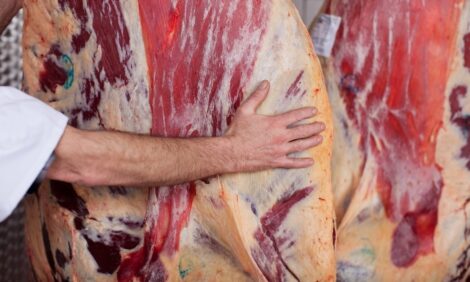



Distillers Grains Make Ideal Protein and Fat Source for Livestock Rations
US - The rapid expansion of the ethanol industry has greatly increased the volume of distillers grains available for livestock feed. Nutritionists with Pioneer Hi-Bred suggest feeding distillers grains for high protein and fat values, but keeping a close eye on sulfur and phosphorous content in grain.“In comparison to corn, if the plant is using sorghum as a primary grain source, expect to see higher protein levels, but a lower fat level,”
“In comparison to corn, if the plant is using sorghum as a primary grain source, expect to see higher protein levels, but a lower fat level,”
“The industry is reporting that 75 percent to 80 percent of the distiller co-products are fed to dairy and beef cattle,” says Steve Soderlund, Pioneer beef nutrition manager. “When evaluating the potential value of these products, make sure you request a nutrient profile from the plant. Consider how these products complement your existing feeding program.”
Soderlund adds that one of the biggest factors in determining the nutrient content of the distiller co-products is the grain source used by the ethanol plant.
“In comparison to corn, if the plant is using sorghum as a primary grain source, expect to see higher protein levels, but a lower fat level,” says Soderlund.
University beef cattle feeding trials have found the energy values of distiller's grain can be as much as 9 percent better than corn. Soderlund says this is due primarily to the fat content in the product which is 2.25 to 2.5 times the caloric density of starch. Most distiller's grains contain between 10 percent to 12 percent fat and 24 percent to 30 percent protein.
“Including distillers grains at 15 percent to 20 percent of the dry matter in a beef finishing ration generally will meet the protein requirements and contribute to the energy needs of the cattle,” says Soderlund. “In forage-based diets for beef cows, distiller's grains can be used as a source of supplemental protein and energy. The amount fed depends on the desired performance and nutrient content of the forage.”
Be aware of two potential mineral concerns, sulfur and phosphorus, when feeding distiller's grains to feedlot cattle. Keep sulfur content to less than 0.4 percent of the dry matter intake from all sources, including water.
Source: Bismarck Farm & Ranch Guide


